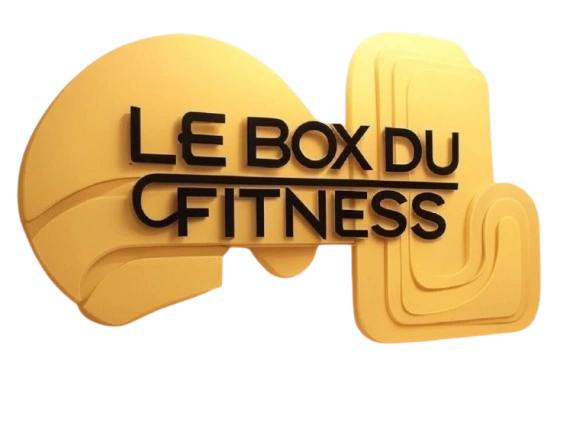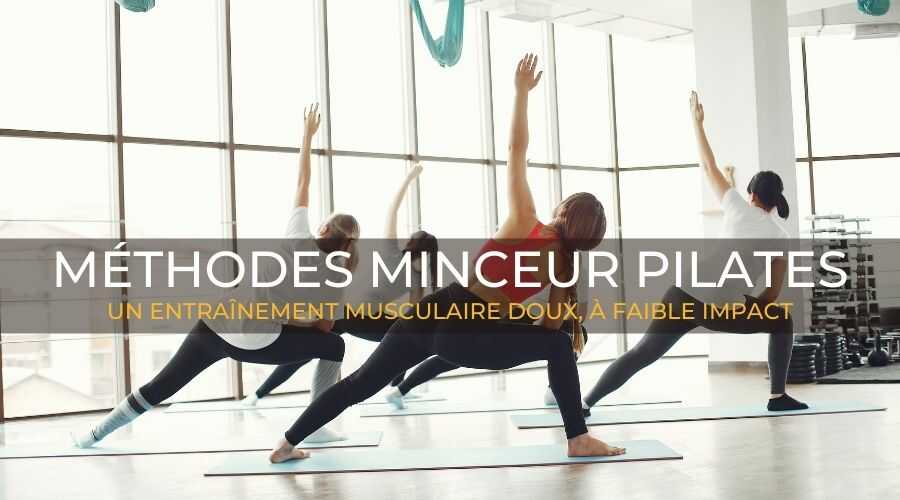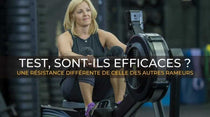20 Minute Pilates Home Workout for All Levels
You don't need any additional equipment to reap the physical and mental benefits of Pilates, all you need is a mat!
Mat Pilates is a gentle, low-impact, yet serious strength workout.
Research shows2 that it can help relieve lower back pain, reduce body fat, improve flexibility, and even promote mental well-being.
In fact, mat Pilates may be even more effective because you use your body weight to strengthen your muscles and stabilize your joints, says senior Pilates instructor Marc Parret.
Here, Marc Parret demonstrates a 20-minute Pilates session on a mat, without a gym or weird equipment.
Whether you're new to Pilates or a seasoned pro, you can follow along with the movement, modifying or adopting more advanced positions where indicated.
Perform three sets of the following moves for an intense full-body burn :
Standing roll
5 repetitions
-
Stand with your feet parallel and hip-distance apart.
-
Inhale, then exhale as you stretch your arms upward and stretch your upper back.
-
Inhale, then exhale and slowly lower yourself to the floor, one vertebra at a time.
-
Sit as if you were in a chair before extending your arms upwards and lifting your heels.
-
Return to standing position.
Dynamic Board Series
15 reps per side
-
Place your hands in a plank position. Engage your abs to draw your right knee toward your chest.
-
Extend your leg back, pointing your toes toward the ceiling and engaging your glutes and hamstrings.
-
Repeat the exercise for 5 repetitions.
-
Then bring the right knee towards the left shoulder in the same way for 5 repetitions.
-
Finally, bring the right knee towards the right shoulder in the same way for 5 repetitions. Repeat the entire series on the other leg.
To modify the exercise, lower your knees to the floor and limit the range of motion of your legs.
Thigh stretch
10 repetitions
-
Kneel on the floor with your knees directly under your hips and your feet touching.
-
Lean your upper body back about 45 degrees, engaging your abs, glutes, and feet while maintaining a straight line from head to knees.
-
Return to the starting position. For more of a challenge, hold the rocking position and lower and raise your arms 10 times.
Kneeling side kick
10 lifts and 10 circles per leg
-
On your knees, lower your left hand to the floor and extend your opposite right hand outward, holding your right hand behind your head.
-
Raise your right leg to hip height, then lower it for 10 reps.
-
Then hold the leg at hip height and rotate the leg in small circles for 10 repetitions. To modify this exercise, lie on your side instead of kneeling.
Stretching both legs
10 to 15 repetitions
-
Lie on your back. Curl up to lift your shoulders slightly and engage your abs to support your lower back.
-
Extend your arms by your ears and raise your legs to a 45-degree angle from the floor.
-
Circle your arms and hug your knees to your chest.
-
To change the position, keep your legs at a 90-degree angle and rest your head.
For more of a challenge, add leg kicks, scissoring your legs together for 5 beats on each extension.
Scissors
10 reps per leg
-
Lie on your stomach. Curve your head and neck upward to lift your shoulders slightly off the floor.
-
Lift your left leg an inch off the mat and extend your right leg toward the ceiling, bringing your hands to your ankle.
-
Pull your right leg twice, then switch legs. Maintain hip stability throughout the exercise.
-
To modify the exercise, gently bend your knees and keep your head low.
For added challenge, extend your arms toward your ears throughout the exercise, keeping your hands facing out.
Hundred
100 repetitions
-
Lie on your back with your arms at your sides.
-
Curl your head, neck, and shoulders up, and extend your legs to a sustainable level (where your abs remain engaged but your lower back does not lift off the mat).
-
Begin pumping your arms up and down, inhaling for a count of 5 and exhaling for a count of 5, for a total of 10 breath cycles.
-
To modify the position, bend your knees to a 90-degree angle (as shown).
Side teaser
5 reps per side
-
Lie on your right side, supporting your body with your right hand.
-
Engage your core and rotate your hips to lift your legs as high off the floor as possible and work your obliques.
-
Return to the starting position with control.
Swan - the Swan
5 to 8 repetitions
-
Lie on your stomach. Place your hands under your shoulders.
-
Engage your core and lift your head slightly.
-
Raise your chest and extend your arms forward while lifting your legs two inches off the mat.
-
Bend your elbows so that your arms form a "W", hold on tight, then lower everything back down onto the mat.
Front Rear Side Leg Series
10 kicks and 15-20 circles in each direction per side.
-
Lying on your left side, bring your legs slightly in front of your hips to create a crutch.
-
Raise your right leg to hip height and kick forward and back, maintaining upper body stability and pointing your toes.
-
Repeat the exercise for 10 repetitions.
-
Then pause at hip height, point your foot, and rotate in small circles (about the size of a tennis ball), 15 to 20 times in each direction.
Roll up
5 repetitions
-
Lie on your back. Reach your arms toward the ceiling, lifting your head and engaging your core to gently roll yourself up.
-
Reach your hands forward toward your toes while drawing your waist back to create length along your spine and maintaining the feeling of pulling your abs in.
-
Roll slowly down.
Is 20 minutes of Pilates a day enough?
How long does it take for Pilates to work?
We all know that every body is different and everyone responds differently to diet and exercise.
This is frustrating for many people, but if you can accept the fact that no exercise works the same for everyone, then you will be in a much better position to accept the time it can take for your body to respond to Pilates exercises.
But, that said, we can generalize and tell you that you should start seeing effects from Pilates within 2 to 3 weeks.
How many times a week should you do Pilates to get results?
Initially, we recommend that you take 2 to 4 private Pilates classes.
This way you could get personalized feedback on your specific needs and get the most out of group Pilates classes.
We recommend these private Pilates classes to help you minimize the possibility of straining a muscle group if you are not aware of your body's limitations.
After all, if you're just starting an exercise program, your body probably isn't used to performing all the movements needed to get your body in shape.
We recommend that you participate in Pilates classes (private or group) 2 to 3 times a week.
Typically, you should start to feel the benefits of Pilates (i.e. increased flexibility, balance and strengthening) within 2 to 3 weeks.
It will take several more weeks before you see results from Pilates on your muscles, so don't expect to have toned arms or legs in the first month.
But if you keep doing the exercises, you will eventually see results!
Is 20 minutes of Pilates a day enough?
For most people, sticking to 20 minutes for a Pilates session is enough.
So, 3 times 20 minutes per week is a good program to start with.
As you become more comfortable with the exercises and become stronger and more flexible, you may want to increase this time to 30 minutes or more.
This is an individual choice and you can certainly discuss it with your Pilates instructor.
Can you lose weight doing Pilates?
Like any exercise program, Pilates will help you burn calories.
So, as long as you consume fewer calories than you burn, Pilates will help you lose weight.
The great thing about Pilates is that it's a full-body workout. You do cardio, strength training, stretching, and toning.
We believe this is one of the best exercise programs that can be done by almost anyone, at any age and at any stage of fitness.
Several Pilates sessions are offered privately or in groups in gyms:
Private Pilates Sessions (55 minutes)
If you are new to Pilates, we recommend that you have at least a few private (one-on-one) sessions with one of the qualified Pilates instructors.
This will allow you to be more comfortable with the routine that will suit your specific goals and body.
Semi-private Pilates sessions (55 minutes)
In semi-private sessions, one of the instructors works with you and another client.
Sharing the exercise experience with another person can help motivate you throughout the routine and you might just make a new friend!
Pilates Trio Sessions (55 minutes)
During sessions, one of the instructors works with you and two other clients for the duration of the session.
It's a great way to share the cost of a Pilates session and work with others to motivate and inspire them.
Each session is tailored to the client's specific needs and goals.
Pilates instructors may focus on toning specific body parts, injury rehabilitation, body relaxation and strength, or specific training for an activity such as dance, martial arts, or a particular sport.
How many times a week should I do Pilates to get results?
Is 20 minutes of Pilates a day enough?
Many people find that 10 to 20 minute Pilates sessions work well for them.
Shorter workouts are more effective as part of an overall fitness program that includes cardio exercises and longer Pilates sessions.
But if you do just 10 or 20 minutes a few times a week, you will see positive changes in your body.
What type of Pilates is best for weight loss?
For a person weighing about 70 kilos, a 50-minute Pilates class for beginners will burn about 175 calories.
A 50-minute class for an advanced level burns approximately 254 calories.
You will burn more calories in a reformer Pilates class or any other Pilates session where you increase your heart rate.
Is POP Pilates a good workout?
POP Pilates is a strength and flexibility workout that can be done barefoot on a yoga mat or on the floor.
No equipment is needed (other than the mat), as all the resistance work is done with body weight.
What are the best exercises for weight loss?
-
Walking: Walking is one of the best exercises for weight loss, and for good reason.
-
Jogging or running: Jogging and running are great exercises to help you lose weight.
-
Cycling
-
Bodybuilding
-
Interval training
-
Swimming
-
Yoga
-
Pilates
Is POP Pilates good for weight loss?
Pilates is a popular low-impact exercise that is effective for toning, building lean muscle, and improving posture.
Practicing Pilates can benefit your health and help you maintain a healthy weight.
However, Pilates may not be as effective for weight loss as other cardio exercises, such as running or swimming.
How often should you practice Pilates to get the best results?
In the case of Pilates, as with many other fitness systems, the general rule is to exercise at least three times a week.
This rhythm helps increase strength, flexibility and endurance.
Is it possible to do Pilates two days in a row?
Frequency of training, it is possible to practice Pilates daily, without recovery period.
However, Joseph Pilates recommends his students not to perform the same exercise two days in a row.
It is a form of active recovery that encourages continued muscle development without putting too much stress on them.
How many days a week should I exercise if I want to lose weight?
If you want to lose weight, aim for at least 200 minutes (more than three hours) per week of moderate-intensity exercise, all else held constant.
If you're cutting calories and exercising, you can get away with a minimum of 150 minutes (2 1/2 hours) per week.
Is it bad to do Pilates every day?
Pilates is safe enough to practice every day.
At first, you may want to do it every day to get into a rhythm and become consistent; then a good goal is to do it every other day.
Joseph Pilates used to say you should do it three times a week.
What is the best way to lose weight: Pilates or yoga?
What is the difference between Pilates and yoga for weight loss?
As mentioned above, the calories burned during these types of workouts are not enough for effective weight loss.
There is actually no difference, as the advanced levels of both workouts burn roughly the same amount of calories.
Which is better: Pilates or yoga?
Yoga can help deepen your meditation practice, improve your flexibility, and promote balance.
Pilates may be better for recovering from injury, improving posture, and strengthening the core.

















